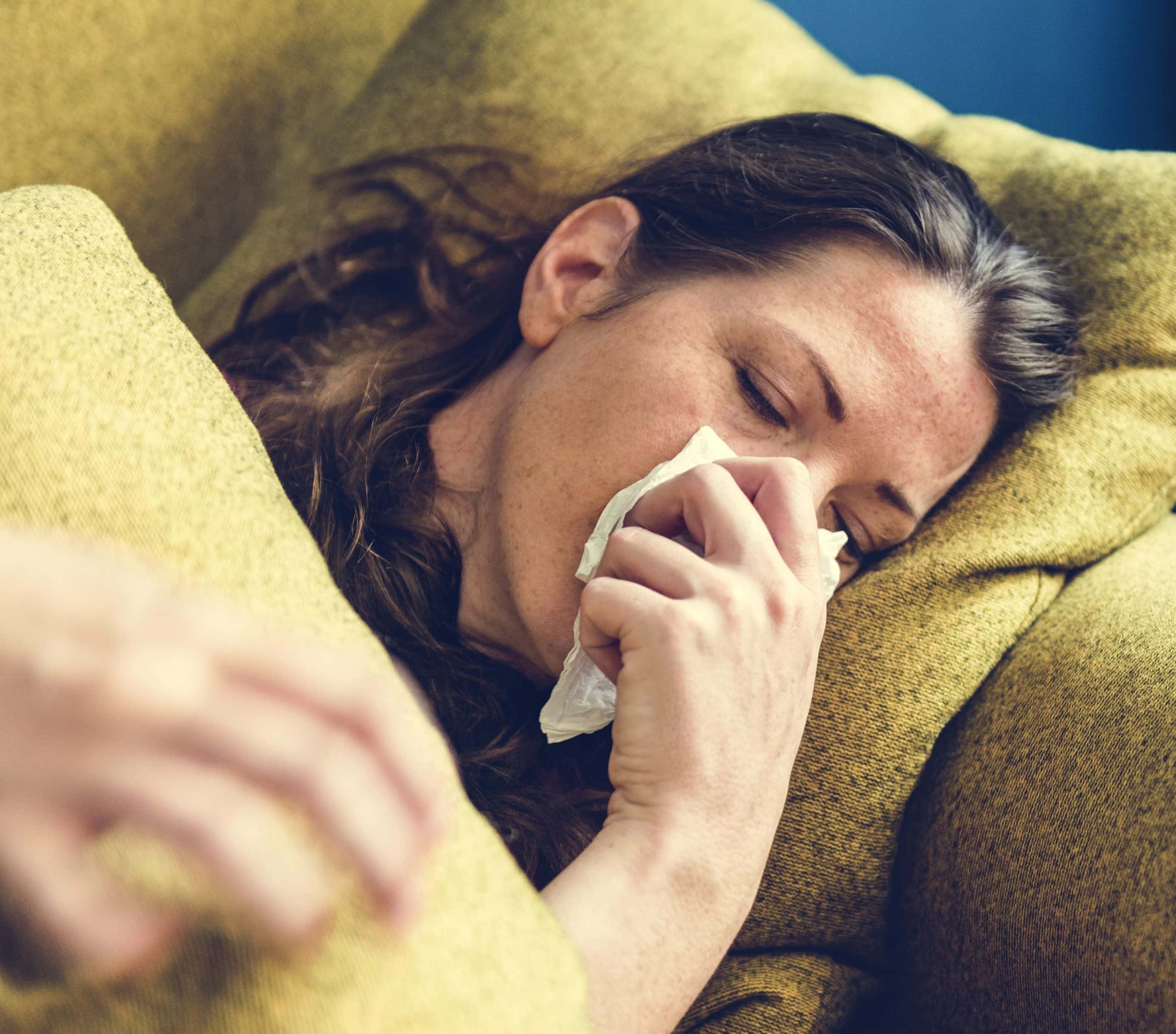There’s nothing like returning home after time away, walking in through the front door, closing it on the outside world, and feeling like you can finally breath again. Home – it evokes images of family, childhood, and (hopefully) good memories. Thinking about home can bring comfort when we are far away, and represents a place where we feel love, nurtured and safe. Or at least it should feel safe. Scientific evidence has demonstrated that the air within homes and other buildings can be more polluted than the outdoor air.[i] Similarly, there is growing awareness that the quality of the indoor environment affects our health and well-being.[ii] [iii] Which makes sense if you consider that people spend approximately 90% of their time indoors (between school, the workplace, our cars and our homes).[iv] And that’s a statistic that was calculated BEFORE the pandemic!! Thankfully, the risk to our health is something we CAN largely control by understanding common sources of indoor air pollution, and (where possible) making healthier choices.
How does indoor air affect our health?
Indoor air quality has been recognized as an important risk factor for human health globally, particularly in developing countries*.[v] The quality of air we breathe determines the health of our lungs as well as other organs, and of course reflects the health of our environment.
Poor indoor air quality has been associated with a number of immediate short-term health conditions, such as headaches; irritation of the eyes, nose, throat and lungs; difficulty concentrating; and fatigue. It has also been linked to longer term health problems that can take years to develop, such as cancer, asthma and cardiovascular disease.[vi]
* Due to reliance on biomass (wood/charcoal/dung/crop residue) as their cooking fuel, and lack of proper ventilation.
What are some common household air pollutants?
Common household pollutants include:
- Carbon monoxide released from fuel-burning stoves, heaters, and other appliances;
- Nitrogen dioxide which can be released from gas stoves and gas or wood heaters;
- Sulphur dioxide which is a product of burning kerosene in a space heater;
- Radon which is a radioactive gas that seeps from the soil and rocks under houses (particularly problematic in homes with basements);
- Second-hand cigarette smoke;
- Particulates eg dust, pollen, mould spores;
- Formaldehyde eg adhesive in furniture, drapes, particleboard;
- Household products eg personal care products, household cleaners, fabric softeners, air fresheners and other products with ‘fragrance’ as an ingredient;
- Renovation/remodelling by-products (eg new carpets, paint fumes);
- Lead eg in paint (pre 1978) and many everyday consumer goods,
- Asbestos which is problematic if the material containing it is disturbed and becomes airborne; or breaks/falls apart with age;
- Toxics that drift inside, or are tracked inside the house on shoes; and
- Pesticides eg products used to kill household pests such as aerosols and surface sprays, and insect/flea ‘bombs’.[vii]
Freshening the Air
Abnormal or noticeable smells, and/or stale or stuffy air, can be signs of indoor air hazards.[viii] Air fresheners are often marketed as a tool to eliminate smelly/stale air. Unfortunately, they can be another source of indoor air pollution (including the air fresheners in cars!). Air fresheners include sprays, diffusers, plug-ins, odour absorbing gels, aromatic reeds, “continuous bursts”, and “neutralising” beads. They have been identified as a primary source of Volatile Organic Compounds (VOCs), which are gases that are emitted into the air.[ix] Commonly found among the VOCs emitted by air fresheners are benzene and formaldehyde, which have been linked to cancer in humans.[x] While some of these VOCs are bad for our health on their own, they can also combine in the air with other gases to create air pollutants, such as formaldehyde, acetaldehyde, glycol ethers, free radicals, and particles.[xi] These substances have been associated with negative health effects like cancer, neurotoxicity, and effects from endocrine disruption. Plus, a large portion of the population experiences headaches and respiratory difficulty from exposure to the air freshener’s synthetic fragrance and the phthalates (endocrine disruptors, that make the smell linger/stick). These chemicals are included in air fresheners to make your environment smell “like a spring day” that “lasts for days or even weeks”.
In 2017, a scientific study by Anne Steinemann[xii] found that fewer than 10% of air freshener ingredients are typically disclosed to the public. And this non-disclosure of chemical ingredients is actually legal! In addition, claims on such products of being “natural”, “organic” or “green” are mostly a marketing ploy and carry no legal or regulatory status. Such “natural” air fresheners also have the potential to emit VOCs.
Is it just me, or is there something very wrong with a readily available product that’s often touted to improve indoor air quality, described as “clean and refreshing”, with “true to life scents“, that actually poses risks to us and the earth?! Especially when research shows it does not clean the air or reduce air pollutants?![xiii]
In addition to investigating the source of the bad smell and/or stale air, there are many healthier ways to obtain safer and fresher air in your internal environment.
For Us and Earth tips:
- Open a window to get air moving – let in the fresh air and push out the bad!;
- Keep indoor house plants to purify the air (avoid plants with pollen or spores; and always check for toxicity to children/pets). Indoor plants also have many physical, mental, and emotional health benefits;
- Pour some bicarbonate soda into an old jar and place it near “smelly” culprits, like shoes or loos!;
- Use a few drops of certified organic essential oils in warm water;
- Vinegar can be poured directly down a drain to deodorise sticky, smelly and/or clogged pipes (pour half a cup of bicarb soda down your sink first, followed by half a cup of vinegar);
- Cut a lemon in half and place the halves around your home;
- Fresh or leftover coffee grounds will absorb unpleasant odours in a fridge, microwave or cupboard;
- Coffee grounds will also sweeten the air inside your car. For use in the car, place the grounds in a covered container with holes punched in the lid; and
- Google “natural ways to remove odours” for more ideas.
Yours in Health,
Carolyn
[iii] Enhancing indoor air quality –The air filter advantage (nih.gov)
[v] WHO Guidelines for indoor air quality : selected pollutants
[vi] WHO Guidelines for indoor air quality : selected pollutants
[vii] Indoor Air Can Cause Health Problems – Health Encyclopedia – University of Rochester Medical Center
[viii]Indoor Air Can Cause Health Problems – Health Encyclopedia – University of Rochester Medical Center
[ix] (PDF) Volatile Organic Compounds and Air Fresheners (researchgate.net)
[x] (PDF) Volatile Organic Compounds and Air Fresheners (researchgate.net)
[xii] Ten questions concerning air fresheners and indoor built environments – ScienceDirect
[xiii] (PDF) Volatile Organic Compounds and Air Fresheners (researchgate.net)



Want to learn more about reducing your exposure to toxics in your everyday products, and other simple swaps for a healthier you & earth?
Sign up here and receive my free 5 Easy Ways to Reduce Toxics OR Join my mailing list and receive regular tips to lower your toxic load.